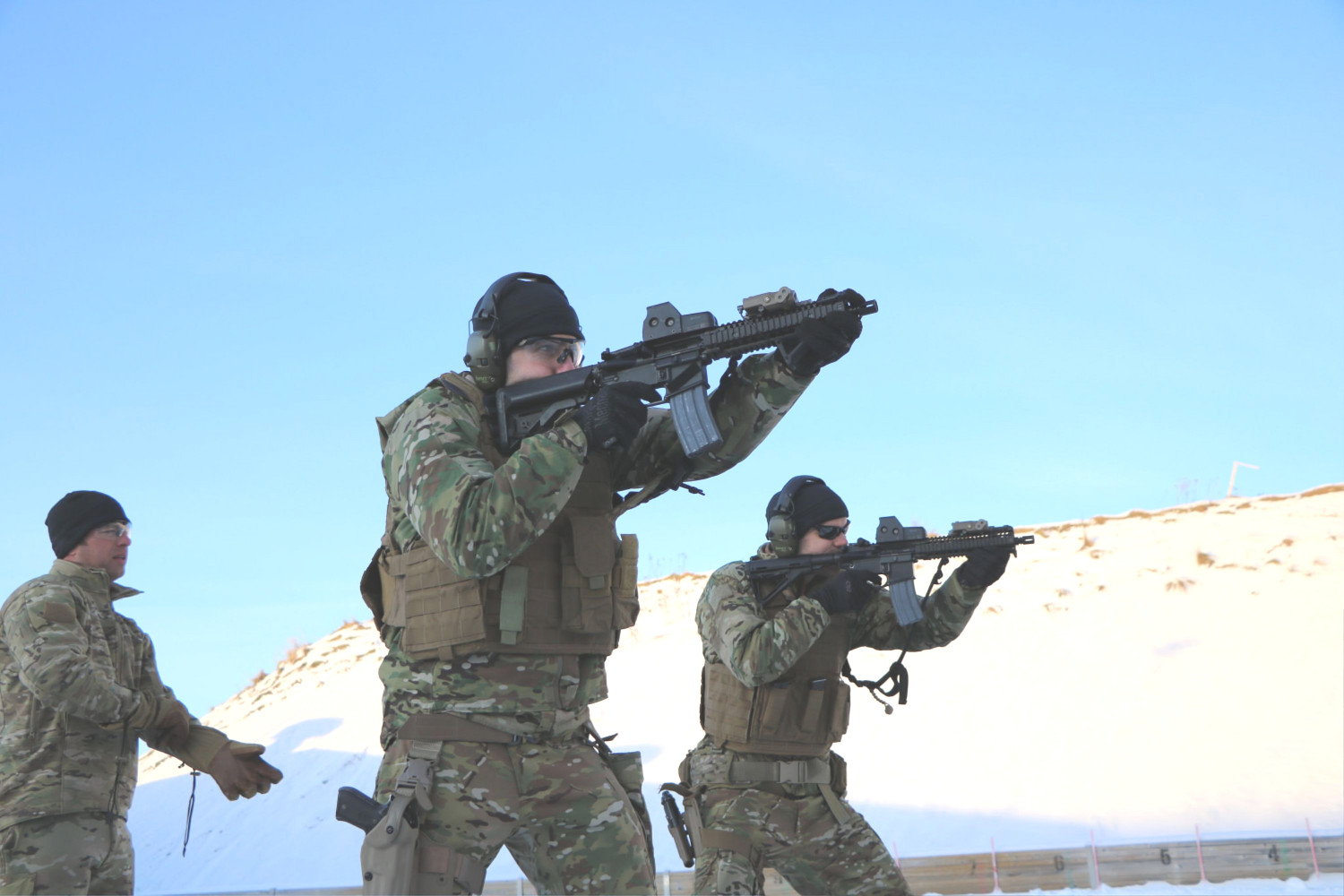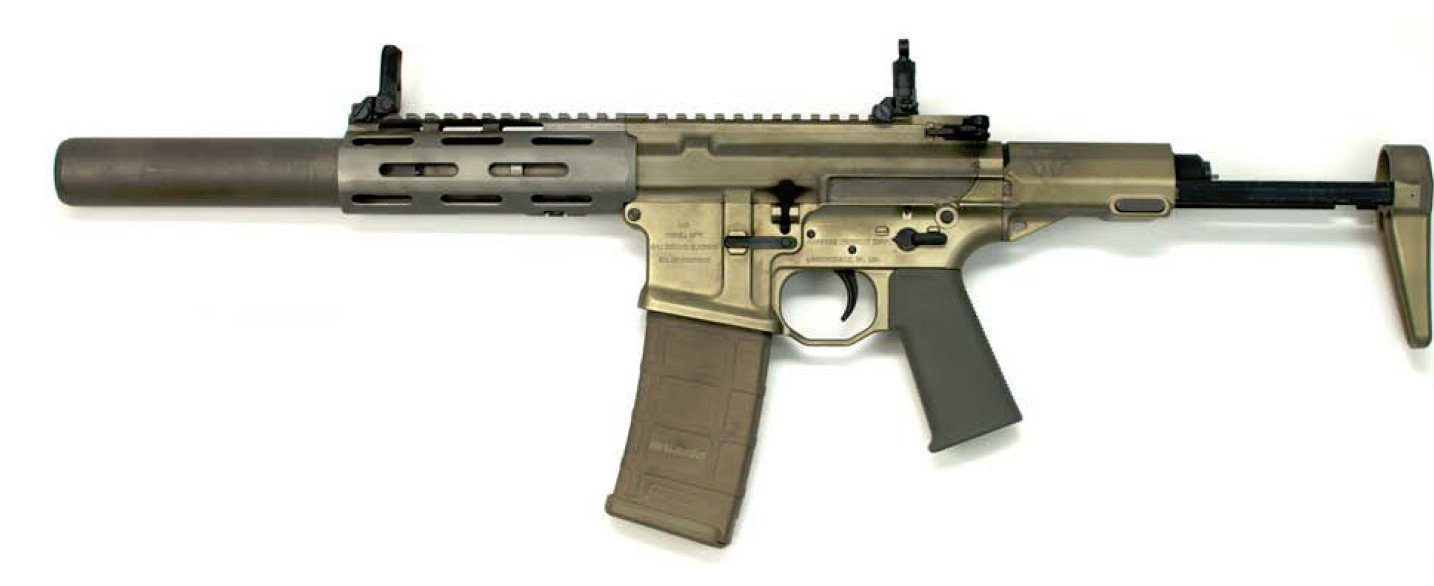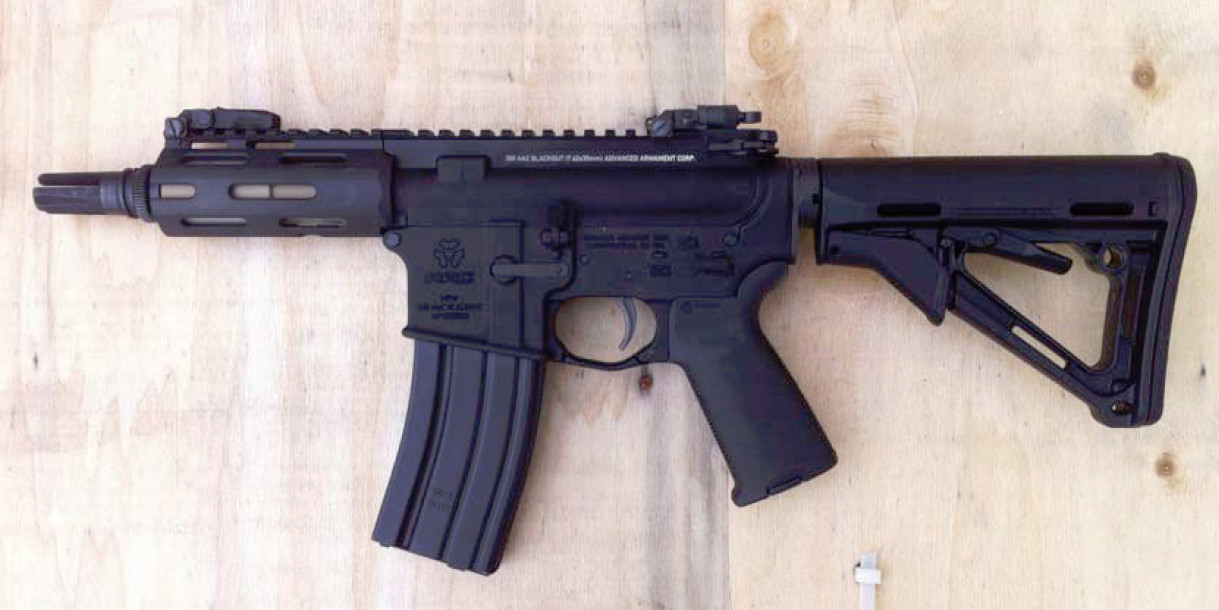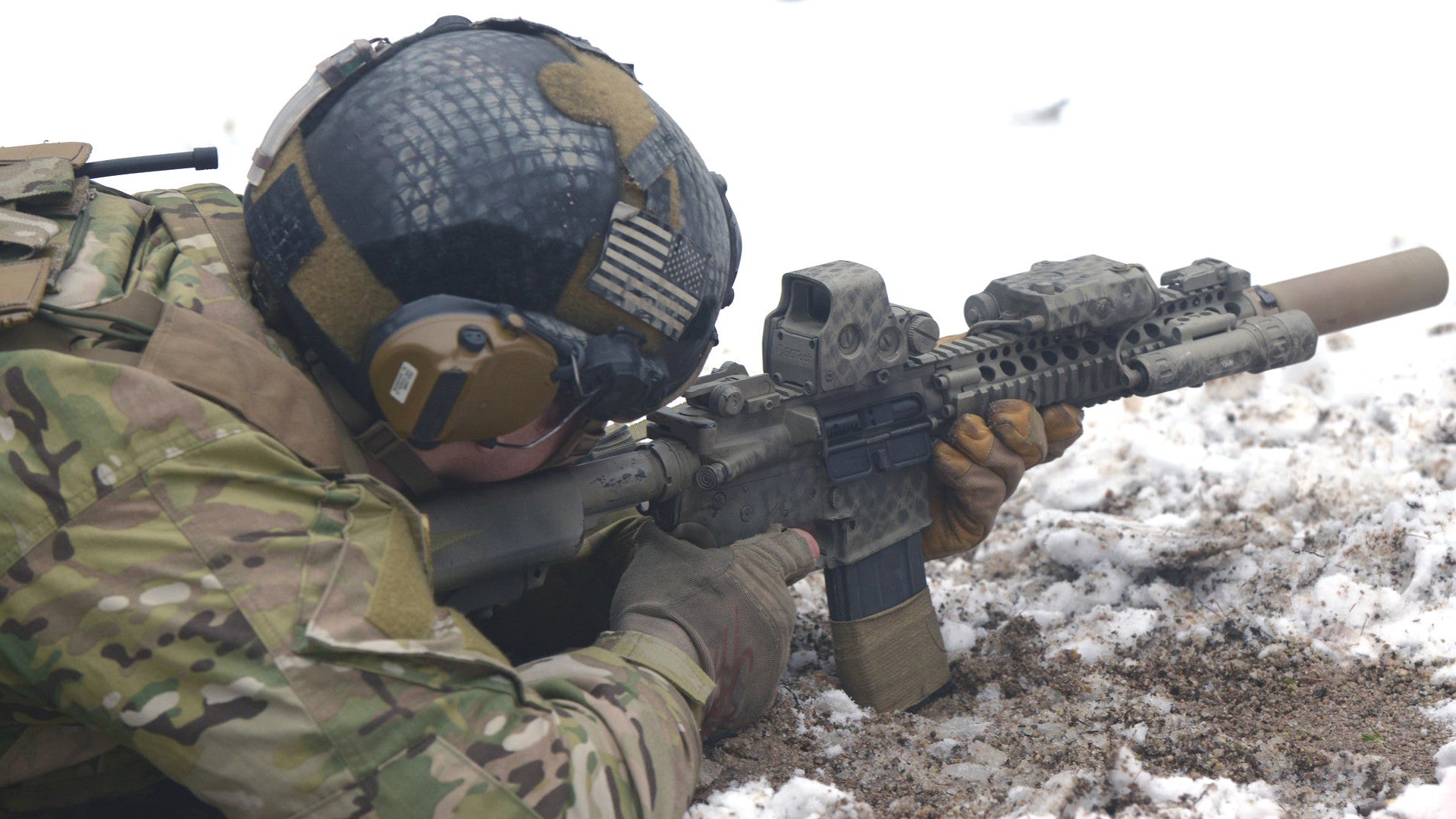U.S. special operators are in the market for a tiny assault rifle. Finding a weapon that meets the proposed requirements could be difficult, but not impossible. In fact, it actually looks like a gun company has already shown one to the Pentagon.
On March 9, 2017, U.S. Special Operations Command (SOCOM) posted a request for information regarding a new personal defense weapon (PDW) on FedBizOpps, the federal government’s main contracting website. Any interested company would have to provide information on a kit that uses the standard M4A1 lower receiver as the core of the gun.
The weapon can’t be any longer than 26 inches with the stock extended, only 7.5 inches high and weigh 5.5 pounds or less. With the stock folded or collapsed, SOCOM wants the gun to shrink to no more than 17 inches long and hopefully just a mere 15 inches.
This would make the weapons ideal for troops engaged in close-quarters combat or otherwise in confined spaces, as well as vehicle and helicopter crews. More importantly, however, the small firearms will fire the .300 Blackout cartridges, but will also have the ability to quickly switch to standard 5.56mm ammunition.

The new cartridge seems to be at the heart of the project. The complete package would offer a handier weapon than a full-size rifle or carbine, but with more firepower than similarly sized 9mm submachine guns or pistols. The gun would also be more powerful than more exotic and compact PDWs on the market, such as the 4.7mm Heckler and Koch MP7 and 5.7mm FN P90. SEAL Team Six reportedly has a number of MP7s, while the US Secret Service uses P90s.
Advanced Armament Corporation (AAC), in cooperation with Remington, developed .300 Blackout in the late 2000s. AAC’s initial business was designing and manufacturing sound suppressors.
Founder Kevin Brittingham was interested in a new round that would be extremely quiet from even a short barrel, suppressed AR-15 or M16-type gun, but still be reasonably powerful and accurate. Taking notes from earlier work on .30 caliber rounds for suppressed guns, AAC’s Research and Development Director Robert Silvers led the project that ultimately turned out the new cartridges
AAC initially planned two basic versions, a supersonic type with ballistics similar to the old Soviet 7.62mm bullet used in the AKM, as well as a subsonic variant specifically for suppressed firearms. Today, independent suppliers offer multiple loads, with different bullets and powder charges, offering varying performance under certain conditions.
To keep thing as simple as possible, .300 Blackout uses the same case head and taper as a military 5.56mm cartridge. This means you only need to change a AR-15 pattern gun’s barrel to accommodate the new ammunition and can use your existing magazines. No additional special parts are needed to swap between the supersonic and subsonic cartridges.

In tests, the new rounds retained more power and accuracy as the test weapons got shorter and shorter. According to a 2012 AAC presentation, an AR-15 in .300 Blackout with a 9” barrel produced the same muzzle energy as an 5.56mm M4A1 carbine with its 14.5” barrel. However, the bullet was flying 400 feet per second slower in that instance, highlighting that the ammunition might be best suited to the PDW role or other shorter-range combat.
AAC estimated a .300 Blackout gun with a 16″ barrel would have an effective range of 460 meters, but that the 9” version would still be useful out to 440 meters. By comparison, Colt says its 5.56mm M16 variant with an 11.5” barrel, the Colt M4 Commando, isn’t effective at ranges greater than 400 meters.
The muzzle energy also had an impact on how bullets reacted when they hit their mark. From a short barrel, at a range of approximately 100 meters, .300 Blackout proved it could still reliably pierce through wood panels, car doors and auto glass and keep going. Many 5.56mm bullets have notable trouble penetrating these sort of obstacles, even with more energy from longer barrels.
If they do make it through the barrier, especially when fired a gun with a barrel 10″ or shorter, the smaller projectiles often deflect off to one side, tumble, or fragment, making them less dangerous to anyone hiding on the other side. In the late 2000s, SOCOM started buying special “barrier” cartridges for special operators using M4s or other 5.56mm weapons specifically to try and correct these limitations. The PDW information request does not include any mention of a specific type of .300 Blackout ammunition.

Despite the impressive specifications, Brittingham and his team were looking at a market that already had a variety of so-called “intermediate cartridges” aimed at civilian, law enforcement and military customers. This term commonly refers to rounds that are larger than .22 caliber ammunition like 5.56mm, but still smaller and lighter than more traditional .30 caliber rifle rounds.
“Remington didn’t want to do this ammo,” Brittingham said in one 2011 interview. “They thought it was a stupid idea.”
With more than 100 companies making various types of .300 Blackout ammunition by the end of the next year, the cartridge’s impressive ballistics and versatility seem to have proven otherwise. In July 2015, the Netherlands Maritime Special Operations Force announced plans to buy a carbine chambered for the American round.
If this latest proposal is any indication, AAC seems to have had success with the U.S. military’s most elite troops, too. But building a gun to fit SOCOM’s needs will still be a challenge.
Possible contenders such as the Colt’s Sub Compact Weapon (SCW) and short-barrel versions of the Sig MCX – a version of which in .300 Blackout reportedly won a similar Joint Special Operations Command contract for a “Low Visibility Assault Weapon” – don’t meet one or more of the stated requirements. Similarly, a company would not be able to simply offer a rebarreled version of the Mk 18 Mod 1 carbine – an M4 derivative with a 10.3” barrel – which U.S. special operations forces already have in their arsenals.

But AAC may already have the answer that question. In its 2012 briefing, the company unveiled what it called the “Low Visibility Carbine,” which also had the nickname “Honey Badger.” At six pounds and just over 24” overall with a compact suppressor and the stock stowed away, it’s very close to what SOCOM wants in its new gun. The gun maker added that barrels as short as 4.5” were feasible, showing off a picture of another especially stubby variant.
And the Honey Badger firing subsonic ammunition “is as quiet as an MP5-SD, but with 3x the range,” one of the presentation slides declared. Heckler and Koch’s iconic integrally suppressed 9mm submachine gun is famously quiet. Of course, there’s nothing to prevent another company from making a similar firearm. Most of the basic components are readily available, even to civilians. The biggest barrier to entry would be meeting the weight stipulations, which could necessitate lightening various internal and external parts.
All in all, it seems very likely that America’s elite troops who need a PDW may soon be carrying a version of AAC’s weapon—or something from another manufacturer that looks very much like it.
Contact the author: joe@thedrive.com
